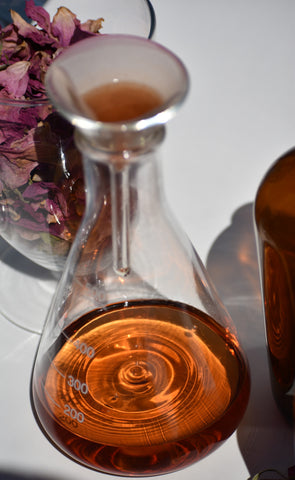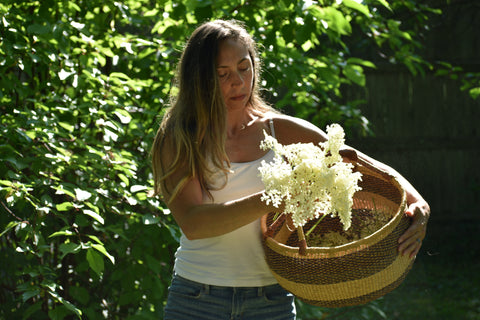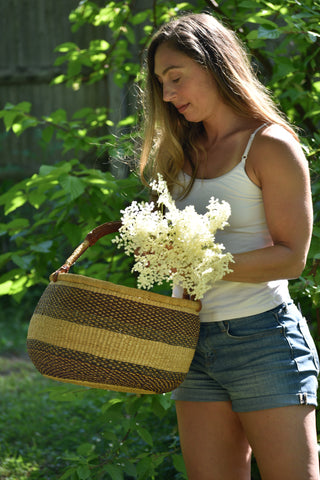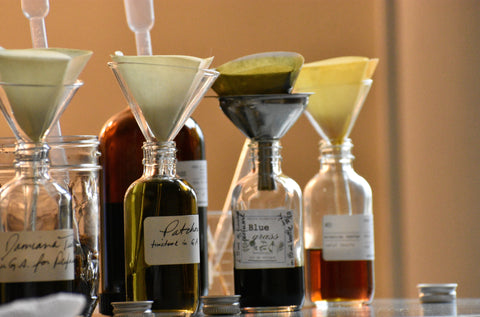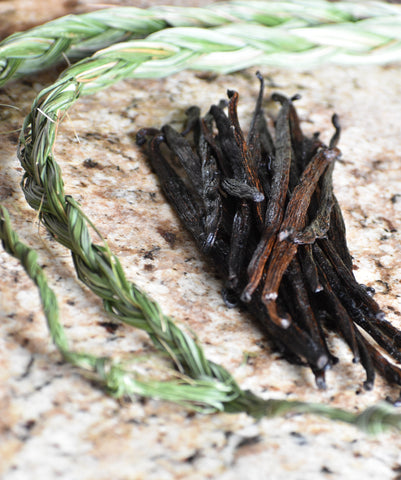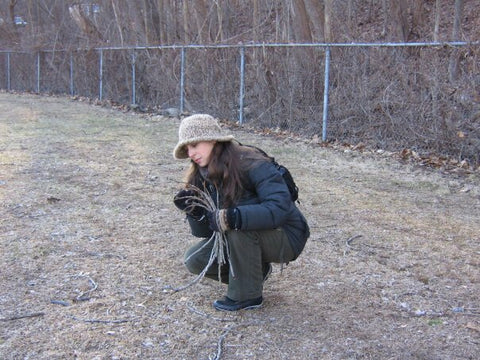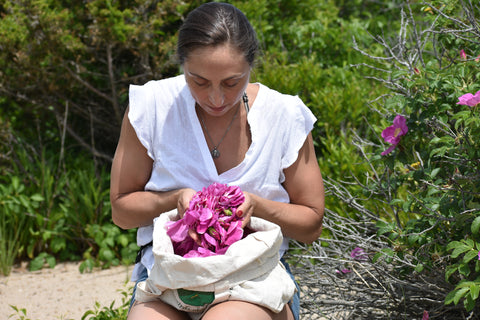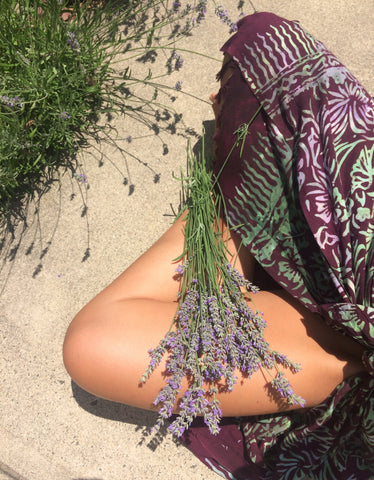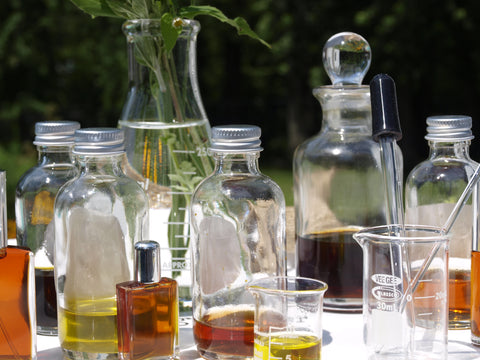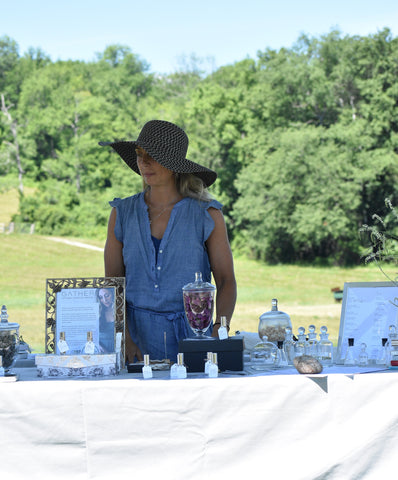Why Are Natural Perfumes Expensive?
Understanding the insides of the botanical perfume process.
Written by Ananda Wilson of Gather perfume.
DEFINE EXPENSIVE
The term expensive is a malleable term. What does it mean to you? Does it mean it is not worth the asking price? Does it mean it’s poor quality? Does it mean it is more money than you can comfortably afford? Does it mean it pushes the envelope of market thresholds?
What, exactly, do you mean, when you say, “too expensive”?
When it came to food and nourishing herbal medicine and bodywork and health, my mother always said, “You pay now or you pay later.” My massages that I need in order to train five days a week as a national level masters weightlifter is around $120 for one session. Is it sometimes hard for me to have enough money to get the massage I need? Sure. But when I do I usually tip her an extra ten or twenty dollars because to me, the wellness I receive is of the highest value. I don’t consider it expensive.
I consider something expensive when the cost of the item or service is out of proportion to its value – both literal value and abstract value.
I consider a Ferrari expensive. You may not. I consider a tiny bottle of pure Rose otto on sale for $350 a steal – you may not.
LABOR
Of course there are the large companies who have created some natural lines – but I am speaking here first on behalf of perfumers like myself. We are small studios, artisans, independent perfumers. We do everything by hand, usually by ourselves. We wear all of the hats from marketing to customer service to artistry to accounting to creative director, editor, producer and manufacturer.
Personally, my labor goes beyond just blending oils. I wildcraft plants. I grow plants. And while these plants sometimes make up a small percentage of a composition, they are crucial key ingredients to the overall olfactory profile and are my work’s intimate fingerprint.
Wildcrafting plants requires time. Locating an ideal harvesting spot with enough plant abundance to respect its continuation, taking a day off from regular responsibilities, waiting for the weather to cooperate, waiting for the perfect timing for the blooming/seeding/rooting/leaving of the plant itself. The act of harvesting is slow and rhythmic, one clip at a time, perhaps a long dig of deep roots, possibly the endless plucking of the tiniest violet flowers. Searching for the highest quality sticky fresh poplar buds that have just fallen from the trunk, but not sat on the ground, and you’re freezing cold on a windy February day, adding bud by bud by bud to your bag.
A voyage to the rose patch – once a year – to collect the freshest, most fragrant wild rose petals. One by one. Arriving home late at night only to stay up later taking care to lay out all the precious petals so that they dry perfectly without browning, and stuffing jars of fresh petals into jars of menstruums to extract – which takes another 6 weeks to occur.
The sticky, messy, clumpy job of gathering drips of resins from conifers … your clothes will never be the same. Glob by glob you collect these pearls of tree medicine, so fragrant and beautiful with strands of gold, red, amber, topaz. Bark bits remain adhered to the resin, later taking more time to extract, remove, strain.....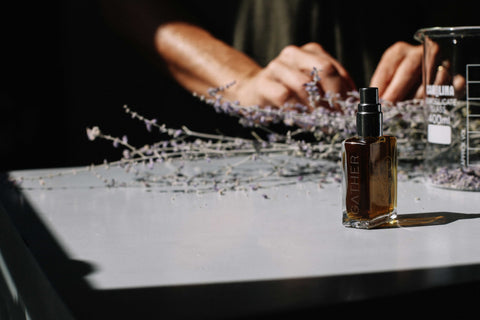
The gathering and processing of plant material is long, slow, laborious, dependent upon the whims of nature, heavily detailed, and requires immense patience and attention to detail. Not to mention the decades of study it took to learn botany, harvesting and plant properties. It’s nearly impossible for me to calculate the cost of my many hours of labor of being a plant processor. It is also deeply satisfying, connecting, and immersed in sensory pleasure – so yes, I love my work. But it’s not free nor machine made.
MATERIALS
Not including the aforementioned plant materials that I create from plants I gather, we have plant material that is sourced from aromatic companies. Essential oils, absolutes, Co2 extracts, cold pressed oils, floral waxes and concretes, etcetera. These precious extractions are what I use to build my perfumes, and while I am not doing the actual growing, harvesting, processing, waiting for nature, or distilling of these plants, someone is. And cost reflects this.
Let’s compare the costs of a few crucial materials:
Rose
Synthetic Rose Oxide: 80 ml / $22.00 (Perfumer’s Apprentice)
Real Rose Otto, Bulgarian: 1 ml / $38.00 (Eden Botanicals)
That's $22.00 versus $3,040.00
Jasmine
Synthetic Jasmine Specialty: 80 ml / $59.00 (Perfumer’s Apprentice)
Real Jasmine Absolute, Grandiflorum 2 ml / $26.00 (Eden Botanicals)
Vanilla
Synthetic Vanilla Bean Key Accord: 4 ml / $3.00 (Perfumer’s Apprentice)
Real Vanilla Bean Co2: 2 ml / $59.00 (Eden Botanicals)
The list goes on and on like that. Real ingredients are exponentially more costly than synthetics. Trust me – I WISH I could bring the cost of my perfumes down! I would probably sell a lot more. For a few days, and then I’d be out of business altogether because I’d have no ability to restock inventory.
CREATION PROCESS / EXPERIMENTATION + INEVITABLE WASTE
Creation takes materials and time. Countless perfume prototypes ("mods") are made in the process of finding the perfect balance, expression and end result that the perfumer is seeking.
We may go through large amounts of rose or neroli or iris - exorbitantly costly materials that we will never make a profit from. These are unpaid rehearsals; the choreographic navigation. This is a materials cost that we must use in the creative process and factor in to the final prices of what we sell in order to account for our many days/weeks/months of time given to a project.
As an indie perfumer, I am my own boss - I don't have a salary or hourly pay rate - I must generate my own income, and that income is completely dependent upon the direct sales of my perfumes, and that income must also account for the materials used for mods that don't find their way to the market.
BUYING POWER
Most of the perfumers like myself, who wish to remain creatively free, independent natural perfumers, are too small to have buying power. This means we aren’t able to source large quantities for a reduced or wholesale price. This means that we are often paying full retail for our aromatics, our packaging materials, our bottles, our labeling materials, our business cards, and our base alcohols and oils.
Commercial designer perfumes cost an average of $2 - $4 for a regular sized, around 200ml, bottle. Total. That includes everything. Marketing, packaging, distribution, and of course the perfume itself. Synthetics are dirt cheap. If this perfume sells for $100, they make a nice $96 ish bucks. And they’re selling a million of them.
My profit margin for 100% natural perfume is maybe 30-40% on a less expensive composition – and after the fact, I am still responsible for the time to bottle, label, package, process, and mail every single order myself. If sell wholesale at a 50% price cut (market standard) I barely scrape by. The bulk order quantity is what helps it work.
Yes I dream (oh I dream) of exquisite packaging! Atomizers that woo me with their perfect mist, and a coffret with engraved branding and silken bedding. Etched perfume names and the finest custom illustrated foliage dressing a stunning glass bottle. I dream! Alas, small shoestring perfumers are hyper limited to the bottles available to the general public – as the luxury perfume bottles require thousands of bottles to be purchased at once. Perhaps if your background is in financing, or you have family money or a nice first career savings account, you have leeway. I have a plant background, and a dance background, and 20 years of homeschooling motherhood – I have experience – but not capital.
AGRICULTURE + WORLD TRADE
We have recently seen many natural aromatics skyrocket in price. There could be some influence from its increase in popularity, but more commonly it is mother nature. Our vanilla crisis has seen devastating losses in vanilla crops, forcing our prices to spike and availability to plummet. Vanilla is one of many examples.
World trade issues and endangered species issues present another side. Cambodian oud is a prime example – now outlawed due to overharvesting, Cambodian oud is still in demand and therefore causing traumatic and violet tragedies by poachers in the wild.
SILLAGE + TENACITY
The lasting power of a natural perfume depends on two factors. Concentration of aromatics, and the aromatics themselves.
Understanding why notes are called “top”, “middle”, and “base” notes is important here. These labels are given to notes based on their evaporation rates. Top notes volatilize and dissipate the fastest, while base notes take the longest.
Naturals do not necessarily match the evaporation rate of synthetics – which is why we could conceivably have a synthetic citrusy type cologne linger for far longer than a natural citrus cologne, which would be fleeting and short lived, because citruses are naturally top notes.
Yet it is misinformation to make the blanket statement that natural perfumes don’t last a long time. They may not stick to your clothes for a week like Coco Chanel, but have you ever smelled real oakmoss? Birch tar? Vetiver? Patchouli? These base note materials will last for several days on a scent strip, and a long time on your skin. And yes, the lasting time and sillage will be further determined by how much or how little the final perfume contains. And how much the final perfume contains of its aromatics, will again affect the final price.
ASK
In addition – we can be suspicious if something is less expensive, which also requires inquiry and discernment.
Look for these aspects when you’re purchasing.
- Is it less expensive because it’s simply made of less costly natural materials and/or a simpler blend? (i.e.: cedar, orange, patchouli, lavender, amyris, or natural isolates)
- Is it less expensive because it’s more diluted? (i.e.: cologne or EDT strength)
- Is it less expensive because it’s mass produced in a factory? Look up the brand's umbrella ownership.
- Is it less expensive because it’s not actually natural? Read the brand's about page - if it lists all the things they don't use, but fail to tell you what they DO use, it's a red flag. If all the perfumes are completely clear, this is also a red flag - most natural materials have color.
Listen – please don’t misunderstand me. There’s a place for synthetics if that’s what you like to smell or if that’s what you as an artist/perfumer enjoy working with. If you believe they are better for your health or if you prefer not harvesting any more sandalwood in the world – I totally respect your choices whatever they may be – This article is meant to expose the internal costs of natural perfumes that cause the external price tag that you pay.
What I don’t want is for you, the consumer, to be misled, ripped off, or lied to.
If you’re going to spend 300 something dollars on a fancy brand fragrance because you love the way it smells – buy it! Wear it. Brag about it. Own it.
But if you’re going to spend that same money on a cleverly marketed fragrance because you think it’s a ‘natural spray’ made without synthetics, that is simply not true. It may still be hypoallergenic or phthalate free – but it’s not 100% natural and the juice will not be as costly as if it were.
Expensive perfumes might be expensive because of the brand, and they might be expensive because the actual juice is expensive. This is completely up to you and what you appreciate. Artistry? Branding? Message? Image & aesthetic? Smell, of course. None of these things are wrong ways to enjoy art in life.
I’m just frustrated with the mismatch – when people have no issue spending tons of money on a fancy brand perfume that comparatively costs pennies to make, but then says that a natural perfume that is extremely costly to make is deemed unworthy of its price tag. I feel as though to say this is the same as not understanding what goes into a natural perfume, that there is the assumption that we are arbitrarily charging more.
It is my hope to shed some light on this.
Either informed selection is totally valid. My perfumes are “expensive”. And yet my profit is a fraction of what most perfumes are profiting. So are they expensive? For precious materials that take time to make and time to age and require diverse resources from our planet … are they?
A WORD ON NICHE
Niche perfume brands straddle the worlds of indie and commercial – and require research to get what you want, and the cost of the perfume may or may not have anything to do with the juice. Most niche brands are either synthetic or mixed media (synthetics + naturals), and where your money is going will vary depending on the house. Perhaps one perfumer’s services are more expensive than another’s. There are myriad variables.
Again, buy what you love, do the research, but perhaps be gentle and discerning with the words “too expensive”.
XO
Ananda
GATHER perfume
©Ananda Wilson 2018

